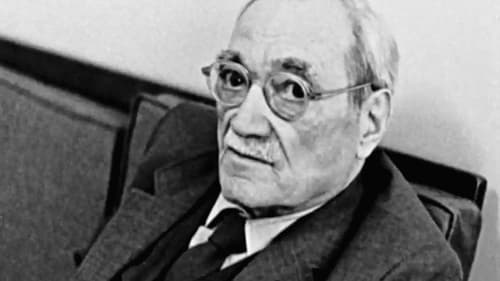
Director of Photography
Documentary on various aspects of Kuwaiti life, the contrasts between a backward society that lives in the desert and a very modern society that lives in the city.

Director of Photography
This feature film is a portrait of John Grierson, the first Canadian Government Film Commissioner and founder of the National Film Board in 1939. Interweaving archival footage, interviews with people who knew him and footage of Grierson himself, this film is a sensitive and informative portrait of a dynamic man of vision. Grierson believed that the filmmaker had a social responsibility, and that film could help a society realize democratic ideals. His absolute faith in the value of capturing the drama of everyday life was to influence generations of filmmakers all over the world. In fact, he coined the term "documentary film."

Director of Photography
Set on an ice-encircled island in the St. Lawrence, this is a drama of passion and violence. An old man, attached to his ancestral home and traditions, is confronted by his son, an immature young man who has no time for these values. The outcome is tragic as the father refuses to let his home fall into the hands of outsiders.

Director of Photography
Summoned by his bosses to broadcast only neutral information, Jean, a reporter, leaves town with his friend to go and collect testimonies from simple people, in the heart of the Laurentians, and reach out to them and outside society at genuine freedom, happiness. The departure is joyous, but the isolation in which they confine themselves does not bring either of them the results they expected. The adventure ends in failure. Would it be an illusion to believe that one can escape the community to which one belongs?

Director of Photography
Traces the history of the peanut. Includes an explanation of food processing, market research which helps improve products and advertising. For primary grades.

Director of Photography
In the countryside of Quebec, a new phenomenon has appeared: violence. How does a handsome, tall, free and peaceful village boy let himself be led down the path of crime?

Director of Photography
Filmed for the most part from a low-flying aircraft, this documentary short presents a breathtaking view of Canada from coast to coast. Showing the varied terrain, from craggy coast to towering glacier, the film illustrates Canada’s pristine wilderness as well as today's industrial and urban realities. Canada the Land was specially commissioned for the Canada Pavilion at the Osaka World Fair in 1970.

Director of Photography
"Labyrinth" is a groundbreaking multi-screen 45-minute presentation produced for Chamber III of the Labyrinth at Expo 67 in Montreal, using 35 mm and 70 mm film projected simultaneously on multiple screens. A film without commentary in which multiple images, sometimes complementary, sometimes contrasting, draw the viewer through the different stages of a labyrinth. The tone of the film moves from great joy to wrenching sorrow; from stark simplicity to ceremonial pomp. It is life as it is lived by the people of the world, each one, as the film suggests, in a personal labyrinth. Re-released in 1979 as "In the Labyrinth" by the National Film Board of Canada in a 21-minute single projection format.

Director of Photography
This short documentary shows Canada's top swimmers in training for the 1964 Olympic Games. Under the critical eye of coach Ed Healy, they practice long hours in the gym and in the pool to build strength and stamina.

Cinematography
The people of Unamenshipu (La Romaine), an Innu community in the Côte-Nord region of Quebec, are seen but not heard in this richly detailed documentary about the rituals surrounding an Innu caribou hunt. Released in 1960, it’s one of 13 titles in Au Pays de Neufve-France, a series of poetic documentary shorts about life along the St. Lawrence River. Off-camera narration, written by Pierre Perrault, frames the Innu participants through an ethnographic lens. Co-directed by René Bonnière and Perrault, a founding figure of Quebec’s direct cinema movement.

Cinematography
Did Cartier dream of making a country from this land of a million birds? In his records of his exploration he certainly marvelled at seeing the great auks that have since disappeared from Isle aux Ouaiseaulx, the razor-bills and gannets that are gone from Blanc-Sablon, and the kittiwakes from Anticosti, all the winged creatures of all the islands which he described as being "as full of birds as a meadow is of grass". And that's not even counting the countless snow geese.

Cinematography
Shows Tête-à-la-Baleine, Québec, a village with a double life--one on the North Shore mainland during winter months, the other on mossy islands of the Gulf to which the entire population moves for summer fishing.

Director of Photography

Cinematography
This short documentary pays tribute to the craftsmen everywhere whose work adds color and richness to life. Filmed in the Canadian Arctic, Finland, India, Nigeria, Japan, Mexico, and Poland, it shows the special skills of artisans working at their crafts - stone sculpture, pottery, ceramics, weaving, dyeing, puppet making, embroidery. Each indigenous skill is a reflection of the culture of the country.












